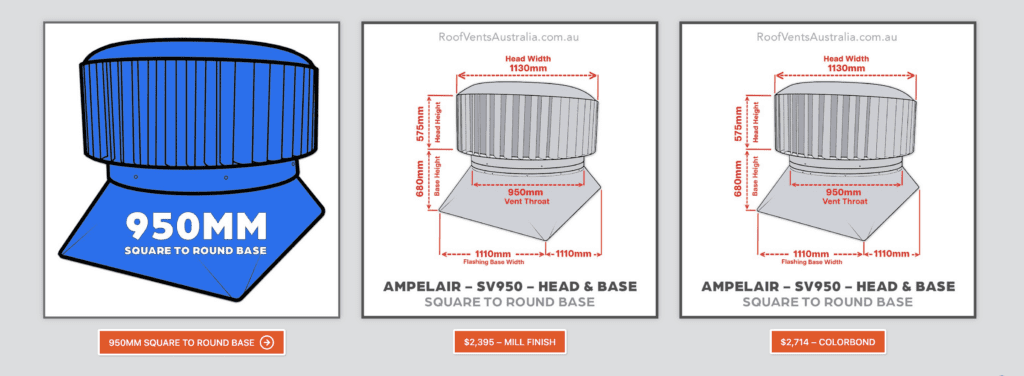Elevate Your Building Game: A Comprehensive Guide to Roofing Solutions in Australia


Rain Heads Custom Made Shipped Free Australia Wide – Click Here >
Dambuster Rain Heads Shipped Free Australia Wide – Click Here >
Commercial Industrial Roof Vents 300mm-950mm – Click Here >
Eco-Friendly Roofing Insulation Shipped Free – Click Here >
Gutter Sumps Shipped Free Australia Wide – Click Here >
Introduction
In Australia, where climate conditions vary from arid deserts to humid coastal areas, constructing a robust and energy-efficient building is no small feat. Roofing, often overlooked in the grand scheme of architecture and design, is an essential aspect that can make a world of difference in terms of energy efficiency, durability, and cost-effectiveness. This article aims to serve as an educational tool, providing comprehensive information on quality-assured roofing services, commercial roof insulation solutions, and much more, tailored for the Australian audience.
Quality-Assured Roofing Services: The Foundation of Trust
Quality assurance in roofing is non-negotiable. In a country where severe weather events are commonplace—think the hailstorms in New South Wales or the bushfires in Victoria—having a sturdy, reliable roof is critical. The Australian Building Codes Board (ABCB) has outlined specific regulations (AS/NZS 1562.1:2018) that roofing services need to meet. These codes ensure that the materials and methods employed can withstand the elements while offering a long lifespan.
To find quality-assured services, look for companies that comply with the Quality Assurance Standards ISO 9001 and are members of industry organizations like the Housing Industry Association (HIA) or Master Builders Australia. These memberships often indicate that a provider maintains high standards in materials and workmanship.
Commercial Roof Insulation Solutions: Tailoring to Needs
While residential roofing has its unique requirements, commercial buildings, especially in bustling centres like Sydney or Melbourne, need special attention when it comes to insulation. Commercial spaces often have large surface areas that can be a significant source of heat transfer. As a study in the “Energy Policy” journal highlights, well-insulated roofing can result in energy savings of up to 25% (Hasselaar, 2006).
Polyisocyanurate (PIR) and Glass Wool are among the top choices for commercial roof insulation. These materials offer excellent thermal resistance and are compliant with the Australian Building Codes. Companies like Kingspan and CSR Bradford offer solutions that can be custom-tailored for commercial applications.
Roof Ventilation for Shopping Malls: A Special Consideration
Shopping malls and large commercial spaces in Australia often suffer from poor air circulation, causing discomfort to visitors and potentially raising energy costs for air conditioning. Here is where aerodynamic roof vents and wind-tested whirlybirds come into play. These solutions not only improve air quality but also help in lowering temperature, reducing the load on HVAC systems.
CSIRO, Australia’s national science agency, has extensively studied roof ventilation systems. Their research underscores the importance of choosing wind-tested whirlybirds, especially in areas prone to high winds like coastal Queensland and Western Australia.
Rainwater Harvesting Solutions: An Australian Necessity
Water conservation is a crucial concern in Australia, particularly in arid regions like South Australia and the Northern Territory. Implementing a rainwater harvesting system can be a sustainable way to utilize natural resources. These systems collect rainwater from roofs, store it in tanks, and supply it for non-potable uses such as flushing toilets, washing cars, or irrigation. According to a report by the Australian Government’s Bureau of Meteorology, a well-designed rainwater harvesting system can reduce mains water usage by up to 40%.
Roof Insulation for Energy Savings: A Long-Term Investment
The potential energy savings from well-insulated roofs cannot be stressed enough. The Australian Department of Industry, Science, Energy and Resources states that effective insulation can save homeowners up to $450 per year in heating and cooling costs. Insulating materials such as reflective foil laminates (sarking) and bulk insulation like fibreglass or cellulose can make a significant difference. Companies like Knauf Insulation offer an array of products that adhere to Australian standards, ensuring you not only save money but also reduce your carbon footprint.
Vented Roof Systems and DIY Roofing Materials
Vented roof systems offer excellent moisture management, preventing the buildup of condensation, which can lead to mould and structural issues. These are especially useful in regions like Tasmania, where the climate can be significantly more humid. DIY roofing materials like polycarbonate sheets are also gaining popularity among homeowners for their ease of installation and durability. However, ensure you consult local building codes before embarking on a DIY project.
Solar Roof Ventilation Systems: The Future of Sustainable Roofing
With Australia’s abundant sunshine, especially in states like Queensland, solar roof ventilation systems are a promising avenue for energy-efficient building design. These systems use solar energy to power fans that improve roof ventilation, further reducing the load on your HVAC systems.
Conclusion
As we’ve explored, roofing solutions in Australia require a multi-faceted approach, from choosing quality-assured roofing services to implementing commercial roof insulation solutions and vented roof systems. Whether it’s selecting aerodynamic roof vents for your shopping mall or implementing a rainwater harvesting system, each choice should be backed by research and compliance with Australian codes and standards. With a focus on sustainability, energy efficiency, and durability, modern roofing technologies offer an array of options to meet the unique challenges posed by Australia’s diverse climates.
References
- Australian Building Codes Board. (2018). AS/NZS 1562.1:2018.
- Housing Industry Association (HIA). Official Website.
- Master Builders Australia. Official Website.
- Hasselaar, E. (2006). Health performance of housing. Indicators and tools. Energy Policy, 34(9), 1220-1227.
- Kingspan. Official Website.
- CSR Bradford. Official Website.
- CSIRO. Official Website.
- Australian Government’s Bureau of Meteorology. (n.d.). Rainwater Harvesting.
- Department of Industry, Science, Energy and Resources. Official Website.
- Knauf Insulation. Official Website.
By being informed and taking a proactive approach to your roofing needs, you’re not only securing your building’s future but also contributing to a more sustainable and energy-efficient Australia.

